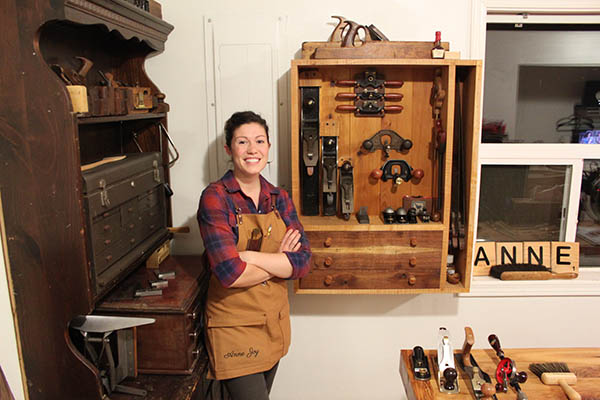
When Anne Briggs Bohnett moved to the Seattle area from Asia a couple of years ago, not only did she not know anyone locally except for her husband and his family, but she also didn’t know anything about woodworking or farming. Today, just five years later, she manages the woodworking program at Pratt Fine Arts Center, owns and runs a four-acre farm just outside Seattle, writes regularly for Furniture and Cabinetmaking magazine and is currently authoring a book on bootstrap woodworking and farming.
Through a lot of time spent researching woodworking and gardening at her local library, going to local woodworking club meetings, and scouring social media for other “locals” with similar interests, Anne suddenly found herself in the midst of what she describes as a vibrant and inspiring community in Seattle. She found a woodworking and gardening mentor, 96-year-old Frank, who, after 60 years at it, still spends every rainy day working in his woodshop.
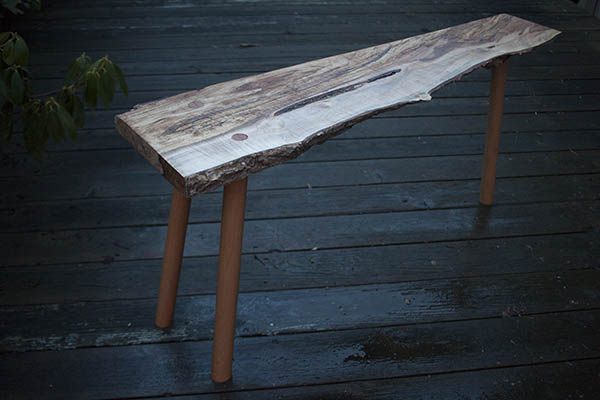
Anne, raised by missionaries, spent much of her young life in Asia. She spent time studying at Peking University (the Chinese equivalent of Harvard), then enrolled in a bilingual Bible school in Taiwan. When she moved back to the States, she initially was initially looking for a job that would take her back to Asia, which led to what she describes as an “entry-level, soul-crushing position” where she “hated sitting in front of a computer screen, because I was not wired to sit still. Ever.”
In looking for alternative ways to live and make money, Anne hearkened back to childhood experiences visiting her grandfather in Minnesota in the summer, where she spent much time in his woodshop. “He taught me to hold a hammer when I was three,” she said.
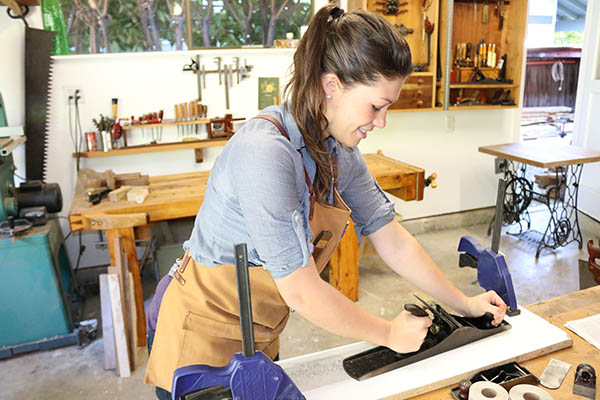
She still uses her grandfather’s hand plane on every piece she makes “so that a piece of my grandpa can be in every piece,” she said. In general, Anne likes using antique tools, thinking about the story they hold of the things they have made over the years. She also prefers traditional methods of working and traditional design: rather than creating something trendy, “If I’m going to take the time to make something, I want it to last,” she said.
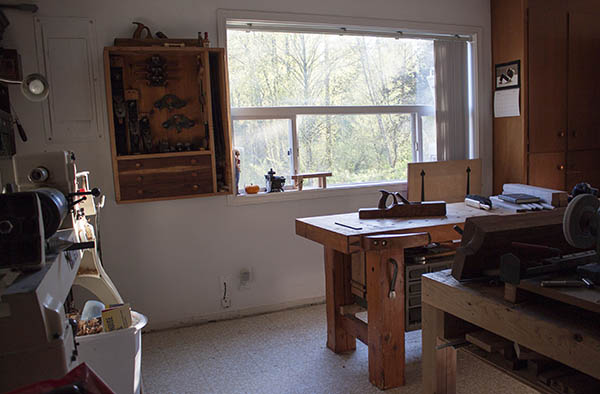
Of course, some of the traditional methods she uses are created by circumstance: shortly after she and her husband bought the farm where they now live, which came with a shop, the roof in that shop building started to collapse. “I needed to move all the hand tools and things that could rust into the house,” Anne said. “I went from a 1,000 square foot shop into an 8’ x 10’ L-shaped laundry room.”
The farm also provides ample opportunity to practice woodworking. “There’s constant opportunity for projects. The goats are always breaking fences; we need new barn doors or new chicken coops; I just built a greenhouse.”
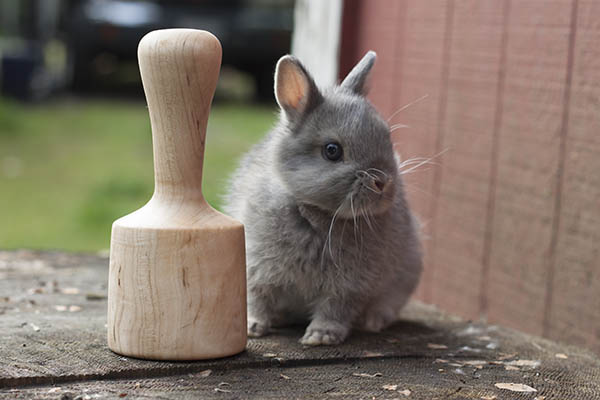
In Anne’s view, cultivating a garden space on a farm is similar to taking rough lumber and co-creating with nature, as she describes it – and she has an affinity for woodworking, gardening “and other traditional crafts that are somewhat less popular today.”
She also sources that rough lumber locally, with a preference for the walnut, cherry and maple that grow in the Seattle area. The wood is dried in her barn: “sticker drying, with a healthy dose of goat poop on top,” she said.
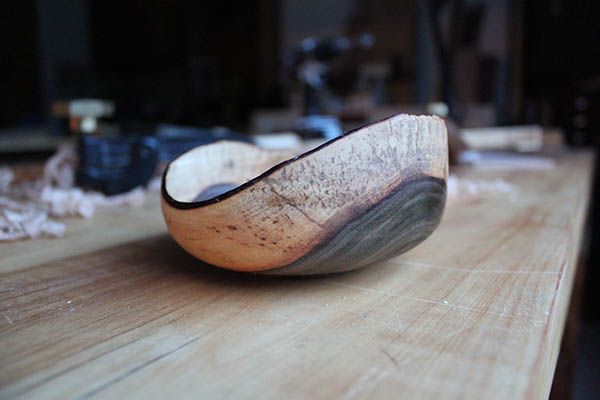
The walnut for a recent Roorkee chair project was harvested from a tree that blew down in a storm just 20 miles from where she built the chair. Anne also salvaged some branches from the tree for making bowls and spoons.
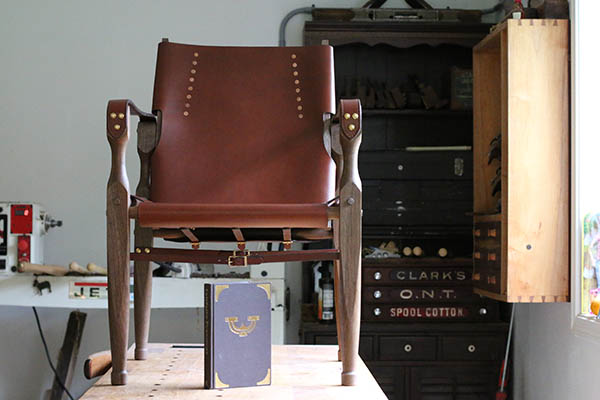
She built the chair in conjunction with Jason Thigpen of Texas Heritage Woodworking, in part to show off the leatherwork he created. “It was a super fun and challenging project, and we brought both our own unique skill sets to create the finished project,” Anne said.
In general, her favorite projects overall have been those she has created with other people, and she credits much of her success as a woodworker to collaborations, formal or informal, with friends like Jason, Kim McIntyre, Andrea Ramsay, Chris Kuehn and Todd Nebel, all friends she initially met on Instgram. Her favorite project to date is an oak writing desk she built with Jonathan Schwenessen and Caleb Nolen while spending a week with the folks at Homestead Heritage in Waco, Texas.
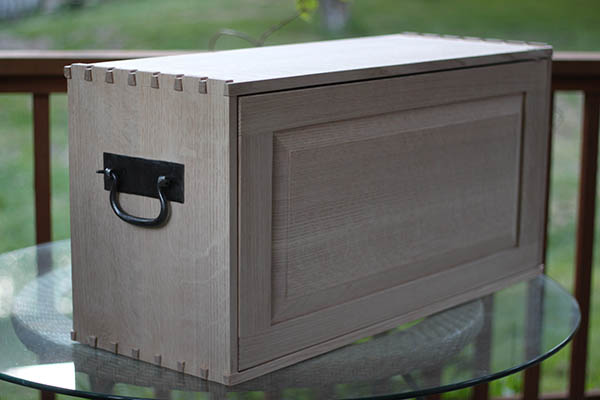
She has also collaborated with several tool manufacturers to create what Anne calls a “Community Tool Chest”: filled with donated tools, this box lives at Pratt Fine Arts Center, where Anne manages the woodworking shop and classes and is currently working on getting a hand tool woodworking program off the ground. “When I first started amassing more followers on Instagram and subscribers to my blog, I didn’t feel equipped to answer many of the questions I was getting. People would ask me ‘What tools should I buy? What tool should I use for this?’ Here I was, a beginner woodworker myself, just sharing the journey, and far be it from me to pretend to be an expert at anything I wasn’t. So I created the Community Tool Chest, a collection of tools and a list of ‘experts’ I could refer people to when I got questions above my pay grade.” The community tool chest gives the students in all of Pratt’s woodworking classes the opportunity to try out tools that are properly tuned for various tasks as they learn hand tool woodwork.
Community and tradition are both important parts of Anne’s woodworking and her life. Although she brings her own natural abilities to woodworking, she also extremely values those who will help her through projects by connecting through Instagram, email and FaceTime. And, with her woodworking and farming activities, she’s on her way to “my dream job with my dream farm in my dream life.”





